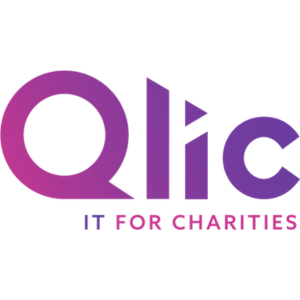Insights
INSIGHTS
All Topics
My Account
The top service delivery trends for 2025
04 Feb 2025by Ioan Marc Jones
We explore the service delivery trends set to define the charity sector in 2025 and examine the various challenges and obstacles that charities might face
Charities, in recent years, have witnessed a reduction in income alongside a rise in demand. That double-edged sword has almost become a norm, with charities ostensibly fighting one crisis after the next. It can feel like a permanent uphill battle. We can perhaps locate the start of that battle with the Great Recession of 2008 and the proceeding years of austerity. Reduced spending increased dependence on charities, as charities had to fill a void in public services.
Then came Brexit and the loss of EU funds. Then the pandemic shattered the economy and lockdowns forced charities to shift ways of working and find new solutions to old problems. Many charities struggled to meet demand. Some had to drain their reserves. Others had to close. Then came the ongoing cost-of-living crisis, putting additional financial pressure on charities.
But, at the risk of speaking far too soon, 2025 may offer a glimpse of hope to charities through economic stability, perhaps low-level growth. And the space afforded by a calmer economic landscape allows charities to stop firefighting and focus on improving service delivery. So, in 2025, we expect charities to re-centre service users through transforming power dynamics and onboarding feedback mechanisms, explore the promises and avoid the perils of emerging tech, and fully embrace collaboration. So, without further ado, let’s look at the trends of 2025.
Skip to: Exploring artificial intelligence in service delivery
Skip to: Experimenting with new forms of digital service delivery
Skip to: Embracing collaborative approaches to service delivery
Skip to: Onboarding beneficiary feedback mechanisms
Skip to: Centring the service user
Exploring artificial intelligence in service delivery
Artificial intelligence (AI) dominated tech discussions in 2023 and 2024. And, in 2025, we expect much of the same. But something seems to have changed in the past few months. The AI hype seems to be declining for various reasons. The proposed productivity boom of generative AI has not yet arrived, certainly not at the once-projected scale. The data used to train AI models is running out and training AI on AI-generated data can lead to drift, divorcing outputs from reality.
The environmental impact of generative AI has proved greater than initially predicted, as models require rapid development, boosting electricity demand and water consumption. And, along with the environmental costs, the financial cost of scaling AI has proved extremely high in recent years, with many high-profile organisations running a deficit, though the arrival of DeepSeek may pave the way for more cost-efficient open-source AI systems.
But, despite the perhaps misguided hype, AI can still prove an effective tool when used correctly. And many charities, as we explored in a previous article, have already used AI to improve their service delivery. Surrey Wildlife Trust has used AI to assess, monitor, and improve habitats across Surrey. Great Ormond Street Hospital (GOSH) has used AI to improve care by finding patterns and insight in their wealth of data. The move, according to Professor Neil Sebire, Chief Research Information Officer at GOSH DRIVE, will help to optimise the development of “new treatments for rare and complex diseases to bring them from research labs to patients more quickly”.
A great use of AI comes from Parkinson’s UK. The charity used AI to track topics and themes communities discussed online, allowing them to uncover key concerns facing people living with Parkinson’s and developed services based on that information. They recognised that keeping fit proved a core concern, for example, and launched fitness sessions via their YouTube channel. It’s a really simple and effective way of utilising AI to improve services. Parkinson’s have used AI to conduct massive user research – meeting the needs of users.
Charities have been using AI but not to the same degree as the private sector. But we expect 2025 to prove the year of application. The hype has died down, expectations around the use of AI have levelled to some extent, and now businesses and charities will focus on application.
So how can you use AI for service delivery? You could create a 24/7 chatbot to address service users. The Jo Cox Foundation has a Loneliness Advice Chatbot on WhatsApp, directing people to anonymous advice. Learning disability charity Mencap launched an understand me chatbot, guiding people through a conversation with Aeren, who shares information about her life as well as providing statistics on learning disabilities in the UK. Chatbots can be a great use of natural language AI but remember that chatbots are fallible and access to humans is always advised.
You could use AI to improve user experience (UX). Service users may find your website difficult to navigate, may struggle to find the services they need. It’s a common problem. And there’s an easy solution, using AI. You can use an AI tool called Attention Insight, which uses tracking data to analyse your web page and create a “heatmap” of the areas where users’ attention will be focused – with an apparent accuracy of over 90%. You can use that information to improve the layout of your webpages, ensuring the most important information takes up the most prominent position.
You could follow Parkinson’s example and use AI for data analysis, or even predictive analytics. You can feed data into extractive AI models and they’ll explain patterns, insights, and trends that you may not have noticed, telling a story about service users that can inform your service delivery. Or you can use generative AI for predictive analytics, asking models to predict future needs of service users. As ever, ensure you take caution when actioning outputs from generative AI models, as they are accompanied by myriad risks, including hallucinations and spreading misinformation.
In 2025, we’ll see a focus on application of AI. Caution should accompany experimentation, but charities that find ways to effectively apply the tech will be able to best serve their communities.
Experimenting with new forms of digital service delivery
AI has been the most talked-about tech in recent years. Leaders, in the charity sector and beyond, have been scrambling to onboard AI, jumping eyes closed onto the bandwagon, with little thought of application. It bears repeating: AI for AI’s sake is not an effective route to success. Charities should explore all digital options. In 2025, other forms of emerging tech, sometimes AI-dependent, sometimes not, will allow charities to experiment with new forms of service delivery.
Past experimentation in the sector has provided fascinating examples of innovative service delivery using digital. Consider how the NSPCC used virtual reality (VR) to raise awareness of child abuse. Talk To Me is the result of a partnership with gamification training provider Attensi, providing an immersive simulation that aims to build confidence in adults working with children to talk about challenging issues, such as abuse.
Acorns Children’s Hospice use a 360-degree VR tour of its facilities to help children experience the hospice and ease their minds. The tour involves wearing a VR headset and exploring the rooms in which children will stay, the medical equipment, the gardens, the hydrotherapy pool, and much more. The tour provides a vital service by easing children into the service.
Or consider the World Food Programme’s embrace of Blockchain. Their Building Blocks initiative, the world’s largest humanitarian use of blockchain technology, allows organisations to work together, co-ordinate efforts, and stretch resources. From the same account, people can access a variety of items allocated by different organisations, such as cash, food, education, and health supplies, allowing a co-ordinated and collective assistance to meet service user needs.
Building Blocks has served more than one million refugees in Jordan and Bangladesh. It was rapidly deployed in response to the Beirut blast in August 2020, coordinating $59 million of assistance to 130,000 people on behalf of 17 organisations. Building Blocks was deployed in Ukraine to co-ordinate assistance to people affected by the conflict, which ultimately prevented $35 million of unintended assistance overlap, translating to an additional 185,000 possible transfers. The initiative uses tech to ensure the right solutions find the right people.
AI is not the only emerging tech that provides opportunities. Charities, in 2025, will likely have a bit more time and space, so they can explore other digital options to meet service demand.
Embracing collaborative approaches to service delivery
Charities, since charities begun, have duplicated services. Two charities may tackle the same problem in slightly different ways. They may tackle the same problem in the same way in different geographical locations. They may tackle the same problem with different demographics.
Competition is not typically helpful for charities. Co-operation and collaboration, as Building Blocks above demonstrated, provides the greatest route to meeting service user needs.
Collective service delivery allows charities to maximise their impact and ensure sustainable, effective outcomes. It allows charities to pool resources, share knowledge, and focus on the systemic issues confronting users. Collaboration can alleviate funding pressures: joint grant proposals undermine competitiveness and grant-funders generally welcome them.
Collaboration can improve advocacy efforts, as the charities can amplify each other, co-ordinate on comms and optics, and present a united front. And collaboration increases accountability, ensuring charities hold each other to account in the pursuit of long-term and meaningful change.
Collaboration is particularly important around more complex societal issues, such as homelessness, education and healthcare disparities, and economic inequalities. Such issues stem from complicated social forces and require solutions that address root causes. And one solution might not prove enough.
Consider disparities in education, for example. Charities need to address the root economic causes, support children facing immediate problems, and lobby for legislative change. That’s too much for any one charity. But separate charities can take each issue individually and apply a wider collaborative approach to produce the best outcomes.
Collaboration does not mean combining two or more charities. It can be small-scale, perhaps simply sharing knowledge with counterparts working in different locations. Or perhaps it means a monthly call with others dealing with similar causes, trying to find new systemic approaches to problems. Or perhaps it means co-ordinating lobbying campaigns, finding common messaging to make the ask more powerful. Collaboration takes myriad forms – and all forms are welcome.
Charities are already collaborating across the sector. Our work on digital inclusion showed us the collaborative power of charities. The National Digital Inclusion Network, led by the charity Good Things Foundation, is a network of local “hubs” that deliver a range of free services that help people access or learn how to use the internet. Joining the network for free gives organisations the ability to provide free mobile data, free digital devices, and support people’s digital skills using the platform Learn My Way.
Or consider how Share Our Spare depends on collaboration. They work with non-profits to provide essential items to communities. But they faced a problem during the pandemic, with the inability to put on their typical fundraising drives to meet the needs of their community. Collaboration provided a solution.
Share Our Spare worked with RightGift, a non-profit virtual platform, which hosted a virtual fundraising drive, allowing Share Our Spare to raise funds and provide the essentials. Collaboration, as the above shows, can help charities plug potential funding or resource gaps, providing a mutually beneficial solution to complex problems.
Plenty of other successful collaborations are worth mentioning. Consider The Climate Crisis Coalition, which amplifies the voices of WWF, the National Trust, Woodland Trust, Oxfam, RSPB, UNICEF and many other influential environmental impact charities. By combining messaging, the message becomes more powerful, more consistent, and the charities can find better solutions.
Or consider the launch of CAST, a non-profit created to help charities on their digital journey, which has already worked with Comic Relief, the NCVO, Guy’s & St Thomas’s Foundation, and many others. The collaborations did not rely on joining forces entirely, but on sharing knowledge, supporting each other to achieve the best possible results for all service users.
But collaboration remains all too rare. In 2025, with a bit more space to make the right strategic choices, we expect charities to embrace collaborative opportunities and yield the benefits.
Onboarding beneficiary feedback mechanisms
The need to centre service users in service delivery has become vital. Charities can assume that they know best, often without any consultation with service users, sometimes without any consultation with anyone. They offer paternalistic solutions, instituting policies that override user’s wishes in pursuit of presumed best interests. Such paternalism can prove damaging.
Paternalism removes agency and autonomy. It opens space for abuses of power. And it can reinforce the very inequalities and power dynamics that charities seek to challenge. Charities are realising, more than ever, that service users must be involved in the design of service delivery.
At present, according to the Charity Digital Skills Report 2024, just 37% of charities are co-designing their services with users. We expect that number to grow in 2025.
And we launched a Reimagining Services campaign to help that growth. Cost and lack of resources are the largest barrier to the involvement of service users. Charities operate on small budgets, with small teams, and the inclusion of service users might seem outside a charity’s remit. But there are simple and effective ways that charities can include service users, arguably the most effective of which is the beneficiary feedback mechanism (BFM).
A BFM is a structured process through which organisations collect, analyse, and act upon feedback from the people they serve. The aim of BFMs is to iteratively improve services. The needs of service users are often evolving. Services need to meet the evolution. BFMs allow an immediate, or close to immediate, response on the services provided at very little cost.
BFMs come in various forms, ranging from suggestion boxes to hotlines, from focus groups to feedback committees. Charities need to decide on the best BFM for service users to voice their opinions. You should consider digital inclusion when picking your BFM: hotlines or SMS feedback might prove the wrong option if service users have low digital literacy or face high levels of poverty. In such instances, the safest option, as shown by UK Aid, might be the face-to-face BFM.
Employing several BFMs rather than a sole instrument can prove beneficial, especially for larger charities. And remember to always make the purpose of the BFM clear and specifically guide service users through the process. Ensure repeat feedback at appropriate times, allowing you to make incremental changes to service delivery and to improve your fundraising campaigns.
Make sure you collect representative feedback. Seek feedback from marginalised, minoritised, and underrepresented groups. Diversity in feedback will ensure services represent your users.
Charities, in 2025, will look to increasingly centre service users. BFMs provide an easy route to achieving that goal, allowing you to create service that meet the changing needs of service users.
Centring the service user
Charities of all shapes and sizes are starting to understand the importance of centring service users. Centring service users improves outcomes, promotes inclusivity and diversity, and builds transparency. And, in 2025, we expect charities to centre service users in various ways.
Your charity can reach out to particular service users to scope how they feel about your decisions, perhaps treating them as a committee, going further than the BFMs allow. Or, better still, ensure that people with lived experience of your cause feature on boards or in leadership roles. That provides a direct line of communication from service user to decision-maker. That means that strategic direction and long-term objectives will be defined by your service users.
Charities can host service users, too, by creating user-led design workshops, which bring service users with lived experience in front of other service users. User-led workshops can provide instant advice, recognise previously unidentified barriers, and create solutions. The workshops can feature an element of mentoring, if both parties are willing, which could assign previous service users with current service users, once again empowering both. Charities, in that regard, play the role of facilitator, helping others to help others and helping others to help themselves.
Charities in 2025 will likely take advantage of peer-support networks (PSNs). PSNs can prove a valuable resource, allowing service users to offer help and guidance to other people going through a similar experience. Charities should work hard to create and facilitate PSNs, providing a safe and open space for service users to feel heard and supported by people who truly understand. PSNs foster a sense of community but also empower both parties.
Service delivery, in 2025, should be focussed on the users. Plenty of routes exist to reach that goal, but charities too often fall into old habits, providing services in the easiest and simplest way, often relying on assumptions about service users. 2025 may prove the year that the sector as a whole finds the space and the stability to centre service delivery on service users.
Check out our Reimagining Services campaign
The charity sector has faced a difficult fifteen years. And, in times of economic hardship, charities have proved strong, robust, and resilient. But at times we’ve forgotten who we serve: not ourselves, not grant-funders, not even public donors, but service users. It’s time that we worked more with service users to carve out a better future, with users firmly at the centre.
So, in 2025, we’re launching a new campaign, focussing on the ways charities provide services. Our Reimagining Services campaign seeks to re-centre service users throughout charity operations, from service delivery to fundraising to volunteering. We’ll provide sector knowledge-sharing and digital advice to help charities reimagine their service delivery.
More on this topic
Recommended Products
Related Videos
Our Events
Charity Digital Academy
Our courses aim, in just three hours, to enhance soft skills and hard skills, boost your knowledge of finance and artificial intelligence, and supercharge your digital capabilities. Check out some of the incredible options by clicking here.



















